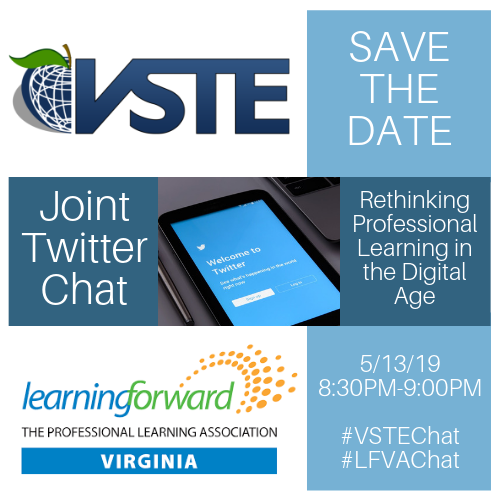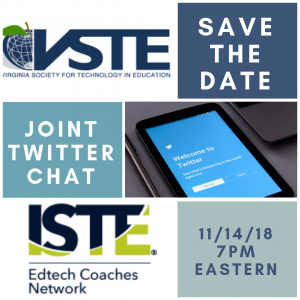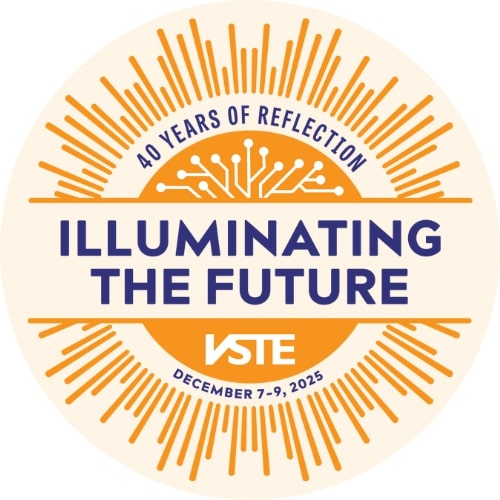To close out this unique school year, VSTE is looking forward to better times in the fall by reading an inspiring book. And we invite you to join us.
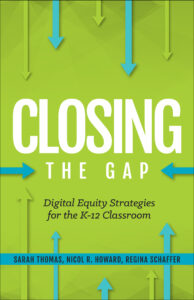 The book is “Closing the Gap: Digital Equity Strategies for the K-12 Classroom” by Regina Schaffer, Nicol R. Howard, and our own Sarah Thomas.
The book is “Closing the Gap: Digital Equity Strategies for the K-12 Classroom” by Regina Schaffer, Nicol R. Howard, and our own Sarah Thomas.
This is the second title by these authors in an ISTE book series designed to help teachers address the challenges of teaching in the digital age, providing positive examples and recommendations for achieving digital equity in their classroom communities.
We will be discussing four chapters from the book in the form of a Twitter slow chat, beginning the week of June 1. We will discuss one chapter each week of June and will conclude with an optional live Zoom session on June 29th. See the complete schedule in this graphic:
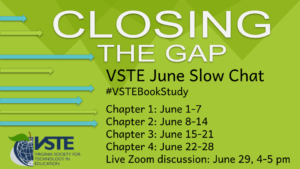
Participants who engage during all four weeks of the discussion and join us for the Zoom session may earn recertification points, subject to approval by the principal or program manager.
You can purchase a digital version or paperback version of the book from Amazon. ISTE members may buy the paperback edition at a special price.
Please plan to join us on Twitter for this unique professional development opportunity, a great way to close out the school year and begin planning for a successful fall.

